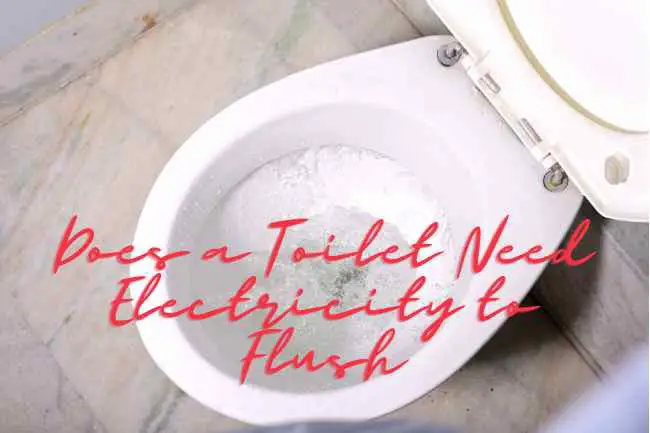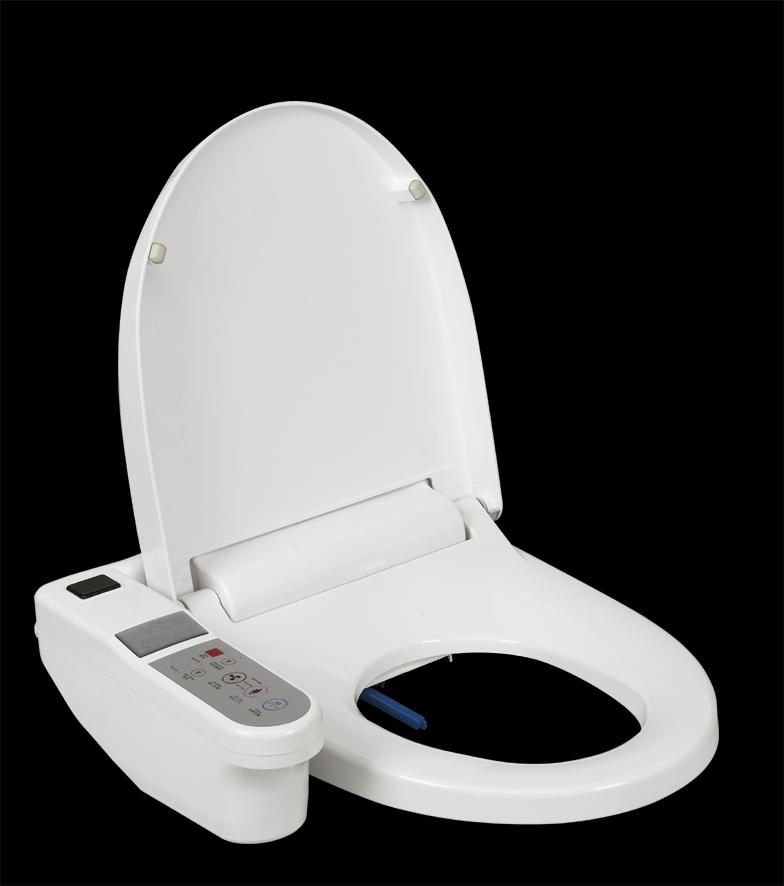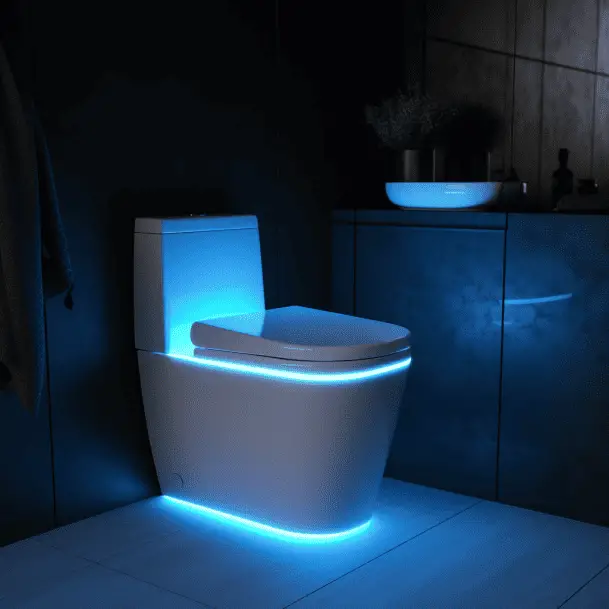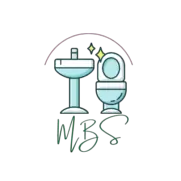Do toilets need electricity to flush? This is a question many homeowners and builders often ask.
The simple answer is that most traditional toilets do not require electricity to flush, as they utilize gravity-fed systems. However, modern and advanced toilets have introduced various features that may depend on electricity to function properly.
Throughout this article, we will examine different types of toilets and their specific electricity requirements, presenting the information in an authoritative, professional, and easy-to-understand manner, equipping you with essential knowledge when it comes to bathroom appliances.

How Does Traditional Toilets Work?
Traditional toilets typically rely on gravity-fed systems, which do not require electricity for operation. The main components of these flush systems include the following:
- Toilet tank: This is the upper part of the toilet, which stores water that is released during the flushing process.
- Flush valve: This mechanism, located at the bottom of the tank, controls the release of water from the tank into the bowl when the toilet is flushed.
- Refill valve: Also known as the fill valve or ballcock, this device refills the toilet tank with water after each flush.
- Overflow tube: This component prevents the toilet tank from overflowing by directing excess water from the tank into the bowl.
- Flapper or seal: The flapper sits atop the flush valve, creating a watertight seal. The flapper rises when the flush handle is pressed, allowing water to flow from the tank into the bowl.
The flushing process in a traditional toilet generally follows these steps:
- The user presses the flush handle or button.
- The flush valve mechanism lifts the flapper or seal in response, allowing water to flow from the tank into the bowl.
- Water rushing into the bowl forces waste and toilet paper down the drainpipe and towards the sewer or septic system.
- Once the flush is complete, the flapper returns to its original position, covering the flush valve.
- The refill valve refills the tank with water, readying the toilet for its next use.
- Modern Toilets and Electricity Use
Modern Toilets and Electricity Use
While traditional toilets rely on simple, gravity-driven mechanisms, modern toilets have come a long way, often incorporating advanced technologies that may require electricity for operation. The table below highlights various electricity-dependent features:

| Feature | Function | Toilet Types Usually Found In |
|---|---|---|
| Electric flush | Provides an electric-powered flush mechanism for efficient and powerful waste removal | Electric flush toilets, smart toilets |
| Heated seat | Warms the seat to provide user comfort during use | Smart toilets |
| Bidet function | Offers a water spray for cleaning purposes after use | Smart toilets, some electric flush toilets |
| Air dryer | Provides warm air for drying the user after the bidet function | Smart toilets |
| Deodorizer | Neutralizes unpleasant odors using a built-in odor-elimination system | Smart toilets |
| Adjustable water pressure | Allows the user to modify the water pressure of the flush or bidet function | Smart toilets, some electric flush toilets |
| Auto-flush | Automatically flushes the toilet upon user departure | Sensor-based electric flush toilets |
| Nightlight | Illuminates the toilet area in low-light conditions for user convenience | Smart toilets |
As evident from the table, electricity is not universally required for all toilets to flush. However, various modern features in smart and electric flush toilets do rely on electricity, providing enhanced comfort and convenience for users.
What Are The Types of Toilets That Require Electricity?
Some modern toilets incorporate advanced technologies that require electricity for operation. Below is a list of toilet types that may need electricity for various features:

- Electric flush toilets: These toilets have an electric flush mechanism that aids in efficient waste removal. They are commonly found in specialized environments such as boats, RVs, and airplanes. The electric mechanism offers increased control and adaptability to constraints in these particular settings.
- Smart toilets: Offering a wide array of high-tech features, smart toilets enhance user comfort and convenience. They often include heated seats, bidet functions, air dryers, deodorizers, adjustable water pressure, and nightlights. Some smart toilets may even be controlled via smartphone apps or voice commands. However, they typically come with a higher price tag and can be relatively more challenging to install.
- Pump-assisted toilets: These toilets use an electric pump to create extra pressure, allowing for more efficient waste removal. They are particularly useful in areas where the plumbing configuration makes it difficult for gravity-based systems to flush effectively. Examples of pump-assisted toilets include macerating toilets and grinder pumps, which break down waste into small particles to prevent clogs in the pipes.
Despite their need for electricity, these modern toilets can offer benefits such as energy conservation, more effective waste removal, and increased user comfort. However, it’s essential to consider the added costs and installation complexity when opting for one of these models.
What Are The Alternative Flushing Methods?
Alternative flushing methods are available for environmentally-conscious individuals or those seeking toilets that don’t rely on electricity. These systems offer varying benefits and drawbacks, which are essential to consider before making a decision.
- Pressure-assisted toilets: In these systems, air pressure is used to create a powerful flush that effectively removes waste. Water from the main supply fills a sealed container within the toilet tank, compressing the air inside. When the toilet is flushed, the pressurized air forces water into the bowl, resulting in a robust and efficient flush. Pressure-assisted toilets are particularly suitable for commercial settings due to their strong flushing capabilities, reduced water consumption, and prevention of clogs. However, they may produce more noise than their gravity-fed counterparts.
- Vacuum-assisted toilets: Using a vacuum created in the trapway, these toilets draw waste from the bowl into the sewer or septic system. When the toilet is flushed, a valve opens to release the vacuum, and water is directed to the bowl to clean it. Vacuum-assisted toilets provide a balance of flushing power and noise level, offering an efficient flush without being excessively loud. They may also use less water, making them an environmentally friendly option.
- Dual flush systems: By offering two flush options, dual flush toilets allow users to conserve water. One button or lever provides a low-volume flush for liquid waste, while the other initiates a full flush for solid waste. This system helps save water without compromising the toilet’s performance.
When selecting a toilet that does not require electricity, understanding the various alternative flushing methods and their respective advantages and disadvantages is crucial. This knowledge will ensure that the chosen option meets specific needs while also being environmentally friendly and efficient.
Choosing the Right Toilet for Your Needs
When selecting the ideal toilet for your home or business, it’s essential to consider various factors that can influence the decision-making process. One primary aspect of evaluating is whether the toilet should be electric or non-electric, carefully weighing the pros and cons of each type. Electric models, while offering enhanced user experiences and a plethora of advanced features, can be more expensive and difficult to install.
Functionality is also a significant factor to consider, as toilets with powerful and efficient flushing mechanisms are more desirable for ensuring optimal hygiene and reducing the risk of clogs.
The toilet’s water consumption also plays an essential role in conserving resources and reducing long-term costs. Models that use less water, such as dual flush systems, can contribute to more significant water savings over time.
Another key consideration is the ease of installation and maintenance. Traditional gravity-fed systems are often easier to install and maintain than their electric or advanced counterparts, which can require specialized skills and tools for adequate setup and upkeep. If a power source is not easily accessible in the bathroom, an electric toilet may not be the most viable option.
Finally, aesthetics should not be overlooked. The toilet’s design, color, and style should blend seamlessly with the space’s overall theme and decor. While this aspect may not directly impact functionality, it does contribute to the bathroom’s overall ambience and user satisfaction.
Conclusion
In conclusion, addressing the question “does a toilet need electricity to flush” reveals that there is a diverse range of options available to cater to different needs and preferences.
Traditional gravity-fed systems do not require electricity to flush and serve their purpose efficiently. At the same time, modern and advanced toilets with added features can provide enhanced functionality and user experience at the cost of increased complexity and potential reliance on electricity.
It’s crucial to carefully consider factors such as water consumption, installation requirements, and aesthetics when selecting the right toilet. By balancing specific needs and priorities, you can ensure that you find the best possible match for your individual circumstances.
